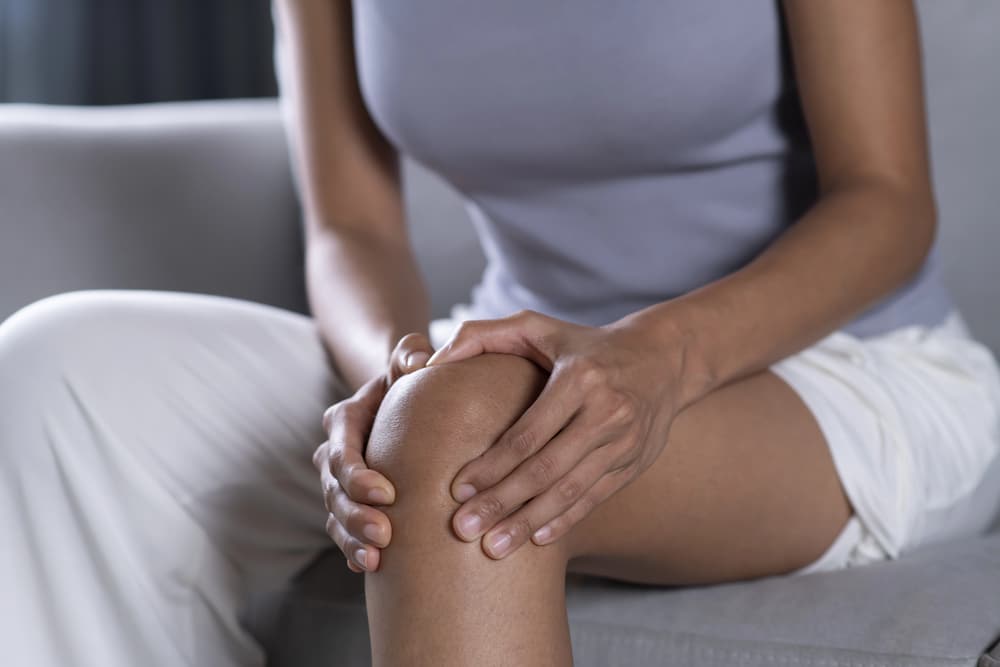
What Causes Stiff Joints & What Can You Do To Help Get Relief?
Nobody wants to feel restricted, but stiff joints can interfere with mobility. Understanding what contributes to stiff joints and how to address the possible causes can help you maintain your well-being. In this article, we examine the common causes of stiff joints and help provide insights for possible relief.
Understanding Stiff Joints
Joint stiffness is the result of movements becoming restricted somewhere in the body.1 Anyone can experience stiff joints, including those who participate in high-intensity activities or live sedentary lifestyles, or age.
Common Causes
There are a variety of factors that may contribute to stiff joints, some of which include:
- Overuse: Repeated use of the same joints can lead to overuse injuries and/or joint stiffness. This could be anything from playing a musical instrument to drawing to playing tennis3.
- Inactivity: A sedentary lifestyle can cause joints to stiffen because the lack of movement reduces fluid circulation around them. This fluid helps keep joints lubricated. When there’s less of it, you may be prone to experiencing joint stiffness4.
- Age: As we age, our cartilage (the cushioning material between our bones) naturally wears down, which decreases the amount of fluid our bodies produce. In some cases, this can result in stiff joints in various parts of the body5.
How to Address Stiff Joints
Some people find the following tips helpful to ease joint stiffness:
- Regular Exercise and Stretching: Engaging in regular physical activity can help maintain joint function6 and mobility. Low-impact exercises like swimming or cycling can be easier on your joints. Regular stretching can improve your flexibility, reduce stiffness, and enhance muscle flow. Before starting any exercise program, it is always advisable to consult your doctor or physical therapist.
- Proper Posture: Maintaining good posture reduces unnecessary strain on your joints, especially in your back, hips, and knees.
- Heat and Cold Therapy: Heat can help reduce joint stiffness, while cold therapy can reduce inflammation.
- Lifestyle Changes: Eating foods rich in omega-3 fatty acids, antioxidants, and vitamins may help reduce joint inflammation and support joint health.3 Before making any lifestyle changes, however, it’s always best to speak with a trusted healthcare provider.
Supporting Your Joint Health
Stiff joints can be frustrating, but finding relief isn’t a lost cause. Theraworx® for Joint Relief is fast-acting, absorbs quickly. and is designed to help with sore, inflamed, and overused joints, giving you relief when and where you need it most so you can Get Back At It®.
This content is not medical advice and should not replace your doctor’s recommendations.
Sources:
- Villa-Forte, A. (2023). Joint Stiffness. In MSD Manual Consumer Version. Retrieved from https://www.msdmanuals.com/home/bone-joint-and-muscle-disorders/symptoms-of-musculoskeletal-disorders/joint-stiffness
- Zivkovic, A. M., Telis, N., German, J. B., & Hammock, B. D. (2011). Dietary omega-3 fatty acids aid in the modulation of inflammation and metabolic health. California Agriculture, 65(3), 106–111. https://doi.org/10.3733/ca.v065n03p106
- Stanford Health Care. (n.d.). Overuse and repetitive motion injuries. Retrieved April 28, 2025, from https://stanfordhealthcare.org/medical-conditions/bones-joints-and-muscles/overuse-and-repetitive-motion-injuries.html
- (n.d.). Inactivity and its consequences. Retrieved April 28, 2025, from https://www.bauerfeind-group.com/en/health/osteoarthritis-joint-wear/inactivity-and-its-consequences
- (2024, July 1). Aging changes in the bones – muscles – joints. U.S. National Library of Medicine. Retrieved from https://medlineplus.gov/ency/article/004015.htm
- Harvard Health Publishing. (2007, November). Exercise and your joints. Harvard Health. Retrieved from https://www.health.harvard.edu/newsletter_article/exercise-and-your-joints